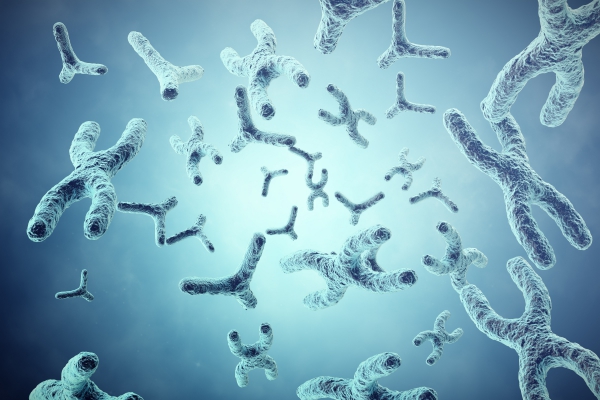What is Turner syndrome?
Turner syndrome is one of the most common genetic abnormalities occurring in females. It occurs due to abnormalities with the chromosomes. The chromosomes are thread-like structure that are located inside the cells of your body and contains genetic material and information. It encodes for specific instructions on how you look like and how your body functions, which makes you unique. A female usually has 2 sex chromosomes namely XX. Turner syndrome arises when there is part or complete loss of the second X chromosome.
The majority of women with Turner syndrome exhibit characteristics such as a short stature and infertility. It is a condition that affects about 1 in 2000 live births in female infants. The majority of conceptions with this genetic abnormality usually die in the mother’s womb and result in a spontaneous abortion. Turner syndrome is associated with a variety of abnormalities affecting various organ systems.
What causes Turner syndrome?
Normally, a person is born with 2 sex chromosomes, XY in males and XX in females. The females inherit one X chromosome from their mothers and the other X chromosome from their fathers. In Turner syndrome, one X chromosome is either missing completely, missing partially or abnormal. The following chromosomal abnormalities may result in Turner syndrome:
- Monosomy: This is when only one X chromosome is present while the other one is completely missing. This arises either due to an error in the father’s sperm or the mother’s ovum.
- Mosaicism: This abnormality arises during early stages of development when cells divide to form new cells. Some cells have the normal 2 X chromosomes while other cells in the body have only one copy.
- X chromosome abnormalities: This is when parts of the second X chromosome is missing or altered. These errors can arise during early stages of development.

These genetic abnormalities result in problems in development affecting growth, fertility and other organ systems. There is no link with the family history.
What are the symptoms of Turner syndrome?
Turner syndrome is a condition that affects various organ systems in the body. The following symptoms may be present in the syndrome:
- Short stature
- “Shield” chest with nipples appearing widely spaced
- Short neck with excess skin along the neck down to the shoulders
- Deformity of the forearm and wrist
- Puffy hands and feet
- Hearing abnormalities
- Thyroid gland dysfunction
- Liver dysfunction
- Knee misalignment
- Infertility
- Cardiovascular abnormalities such as defects with valves in the heart, defects in the walls of the heart, and major blood vessels
- Rupture of the aorta which is a major artery in the body- also known as aortic dissection
- Kidney malformation also known as horseshoe kidney
- Osteoporosis which is the loss of bone density
- Visual disturbances and other eye problems
- Diabetes mellitus

How is the diagnosis of Turner syndrome made?
To make the diagnosis of Turner syndrome, a doctor relies on the signs and symptoms as well as physical examination to suspect the presence of the condition. However, to make the definitive diagnosis, your doctor will have to order special tests to analyse the child’s chromosomes, looking for any genetic abnormalities.
In some cases, the diagnosis can be made prior to birth, meaning, during the pregnancy itself. On routine ultrasound examination, your doctor may suspect if your baby is likely to have Turner syndrome based on some specific findings. Other specialized tests may be performed during pregnancy to confirm the diagnosis. A small piece of placenta may be collected using special devices by a professional to analyse the genetic material of the baby as they are both the same. This procedure is known as chorionic villus sampling. Another test may be done by collecting a sample of amniotic fluid from the uterus. This fluid contains cells from the baby which can be used for genetic studies looking for any chromosomal abnormalities. This procedure is known as amniocentesis.

How is Turner syndrome managed?
Unfortunately, there is no cure for Turner syndrome. Once you have it, it is a lifelong condition. The majority of people with the syndrome live a long and healthy life if proper care and follow up is established to prevent complications. If you have Turner syndrome, you should be regularly screened for complications and other chronic diseases. The management of Turner syndrome involves various healthcare professionals specialised in a variety of fields.

During childhood, growth hormone therapy is usually prescribed to help preventing short stature. Studies have shown that the combination of growth hormone therapy and low-dose estrogen is effective against short stature. Estrogen therapy is also recommended to begin puberty and is often initiated around the age of 11 or 12. It helps in the development of breasts and uterus. It should be continued till the average age of menopause is reached.
The majority of women with Turner syndrome are not able to fall pregnant on their own. If a woman with the syndrome wants to have a child, she can fall pregnant with the donation of an egg or an embryo. Your obstetrician will evaluate the risk of a pregnancy and discuss about the best option for you.
Prognosis
In general, the prognosis of Turner syndrome is good. Most people however remain shorter than average even if they are prescribes growth hormone therapy. Turner syndrome is not known to cause mental retardation. Life expectancy is mildly shorter in individuals with Turner syndrome compared to normal. Almost all women with Turner syndrome are infertile, however, pregnancy may be possible if embryo donors are available.
Source:
Backeljauw, P., 2020. Clinical manifestations and diagnosis of Turner syndrome
Turner HH. A syndrome of infantilism, congenital webbed neck, and cubitus valgus. Endocrinology 1938; 28:566
Daniel, M., 2018. Turner Syndrome Treatment & Management
Davenport ML. Approach to the patient with Turner syndrome. J Clin Endocrinol Metab. 2010 Apr. 95(4):1487-95.
Bondy CA. Care of girls and women with Turner syndrome: A guideline of the Turner Syndrome Study Group. J Clin Endocrinol Metab. 2007 Jan. 92(1):10-25.





